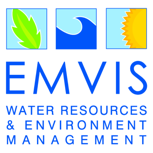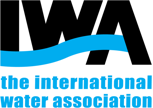Room: NL 253
Using Space Enabled Water Quality Forecasting in Decision Making
See Press Release here.
Drinking water accounts for around 18% of total fresh water abstractions in the European Union, and is treated and supplied by almost 70,000 utilities. While freshwater resources are already limited, they face increasing pressures from drought, flooding, pollution, population growth, as well as demands for other uses including agriculture, energy production, recreation and ecosystem protection. Environmental and financial impacts have often been underestimated. Technological innovation is instrumental in addressing our increasingly complex and multidisciplinary water challenges. Space technology is part of promoting and supporting innovation by providing environmental information which can be used to improve preparedness and planning by water utilities and other end users. This event will showcase how satellite technology combined with local monitoring and advanced modelling can be used to improve operations and performance of service providers downstream, such as reservoir managers and water utilities. Developments from the SPACE-O project will be highlighted, the outputs incorporates Earth Observation data and the use of models to provide information on water quality and flows forecasting. The event will focus on the economic impact of turbidity and algal blooms on water operations and how such tools can inform decision making on preparedness for changes in water quality and quantity.
Objectives and outcomes
- To learn about SPACE-O (https://www.space-o.eu/) and how the outputs can be used;
- To understand how problems like algal blooming and high turbidity affect operations of water treatment plants and reservoir managers in the provision of drinking water;
- To identify the economic impact of these problems in utility operations, and investments being undertaken to moderate or mitigate these impacts;
- To demonstrate the significance of advanced science and technology innovation in developing quality, reliable, sustainable and resilient water infrastructure, contributing directly to SDG 9.1.
Programme
Moderators: Katharine Cross and Carolina Latorre, IWA
12:00-12:05 Setting the scene (Introduction to the topic)
How can satellite technology combined with local monitoring and advanced modelling be used to improve reservoir’s management and performance of service providers downstream?
By Apostolis Tzimas, EMVIS
12:05-12:15 Demonstration of the SPACE-O system: focus on water quality forecasting
Video (demo)
12:15-12:20 Mentimeter
Interactive audience feedback
- Who is in the room?
- Rate water problems in your area
- What was the most interesting part of the demo?
- What’s your willingness to pay for the tool?
12:20-12:30 Perspectives and opinions from utilities
Godfrey Masinde, Nairobi Water, Kenya
- What type of economic impact has algal blooms and turbidity had on operations?
- What forecasting information do you think would be useful to private operators, how would the information be used to make decisions?
12:30-12:45 Discussion with audience
- How can this type of technology reduce the economic impact of algal blooms and turbidity?
- How would you use the information provided by the tools in practice? Who would find it useful and how would they apply it?
- What type of investments have been undertaken to reduce or deal with algal blooms and/or turbidity?
- What information is missing and do you think such technology can fill this gap?
Convenors of the showcase *
International Water Association, Swedish Meteorological and Hydrological Institute, EMVIS Consultant Engineers S.A., EOMAP GMBH & CO KG, EUROPEAN DYNAMICS BELGIUM SA, CONSIGLIO NAZIONALE DELLE RICERCHE, Organization for the Development of Crete S.A., Ente Acque della Sardegna.









